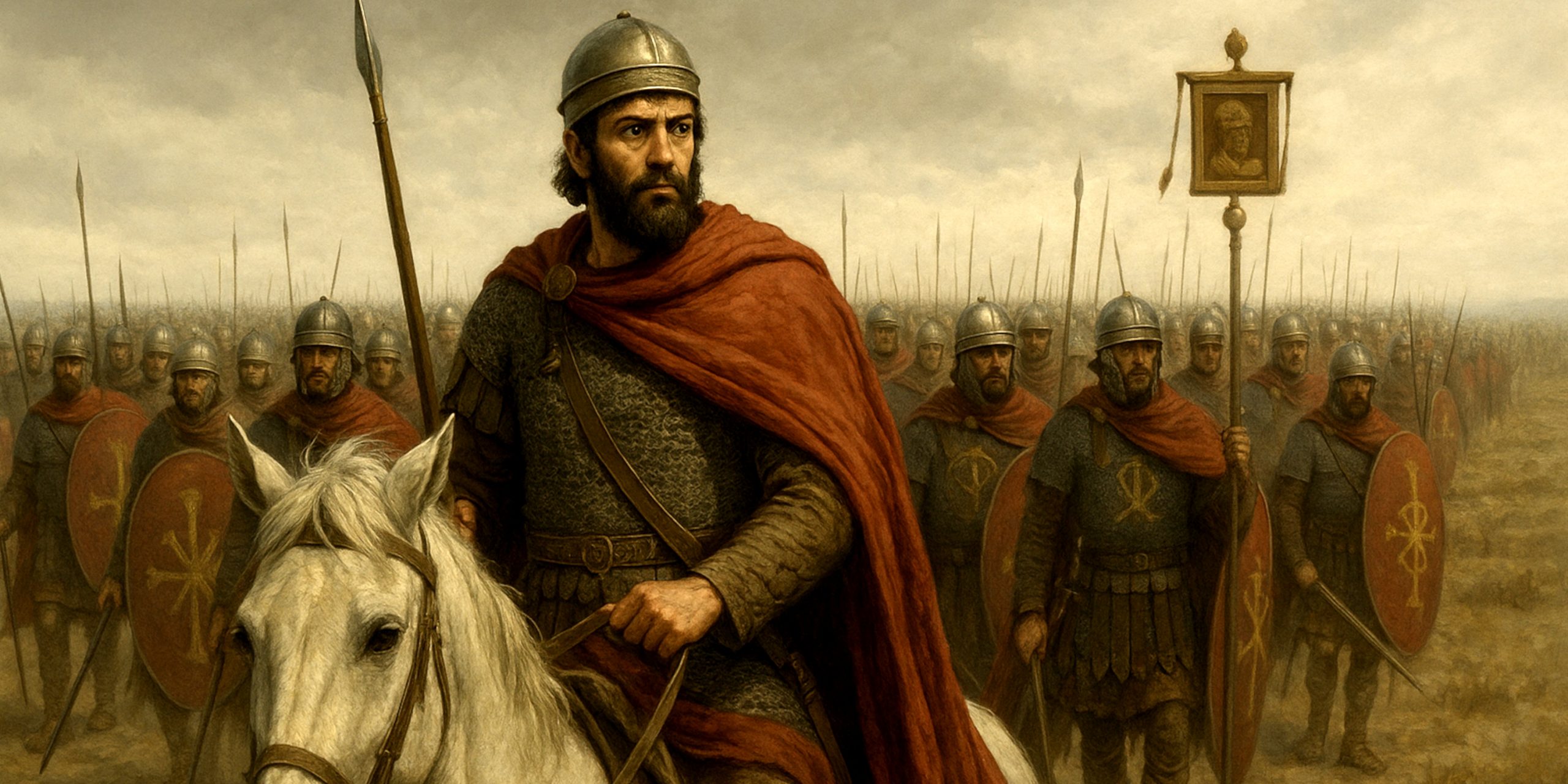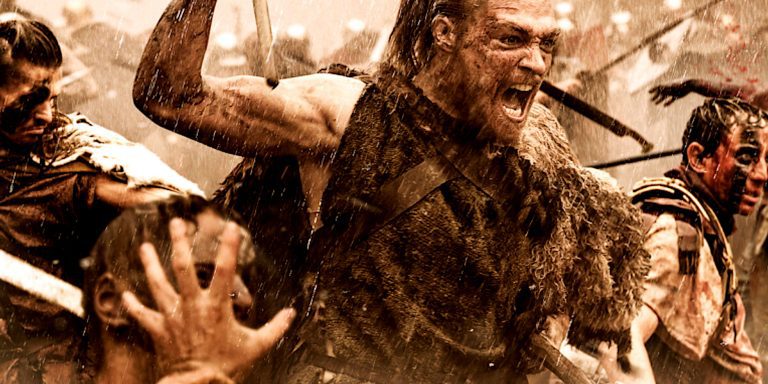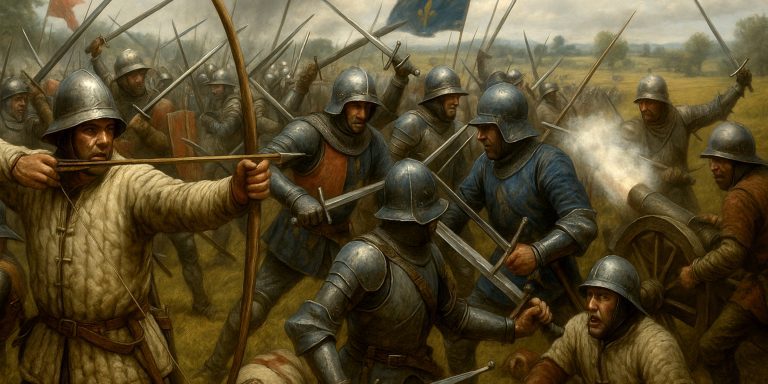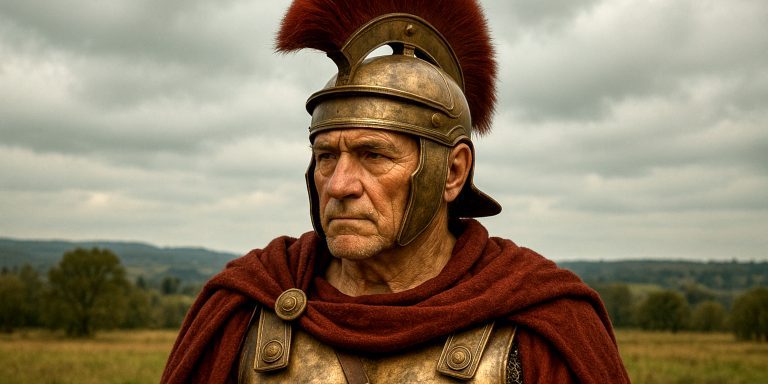
Few emperors in Roman history inspire such a mixture of admiration and melancholy as Julian, known to later Christians as the Apostate. Philosopher, soldier, reformer, and would-be restorer of the old gods, Julian’s life reads like a tragic epic. His reign, brief and brilliant, was an attempt to turn back the clock of a Christianising empire through intellect and steel alike.
Flavius Claudius Julianus, born in 331 or 332 AD, was a nephew of Constantine the Great. His childhood was shaped by both privilege and terror. Following the brutal purges that followed Constantine’s death, most of Julian’s male relatives were executed, leaving him orphaned and watchful. Educated in the traditions of Greek philosophy, Julian developed a lifelong fascination with Neoplatonism and the ancient gods, quietly rejecting the new Christian orthodoxy that defined the imperial court.
By the time he was declared Caesar in 355, Julian was a scholar thrust into the brutal mechanics of power. Within a decade, he would be emperor in his own right, worshipping the gods of Olympus, leading armies across Gaul and Persia, and dying on campaign in the east, apparently murmuring that he had been bested not by men, but by the Galilean Christ.
Arms and Armour
Julian’s martial image was a deliberate one. Despite his philosophical leanings, he was every inch a Roman general in the field.
Typical Arms and Armour of Julian’s Campaigns
| Equipment | Description | Notes |
|---|---|---|
| Helmet (Intercisa type) | Segmented iron helmet with reinforcing ridge | Common among 4th-century Roman officers |
| Cuirass | Mail (lorica hamata) or scale armour (lorica squamata) reinforced with a pectoral cross-strap | Officers often wore ornate versions with gilded fittings |
| Sword | Spatha, long-bladed cavalry sword | Effective in both mounted and infantry combat |
| Shield | Oval or hexagonal scutum with painted emblem | Units under Julian bore variations of the Chi-Rho until his religious reforms |
| Spear and Javelin | Standard infantry armament | Julian often fought at the front with spear in hand |
| Cloak (Paludamentum) | Imperial crimson cloak fastened with a fibula | Worn in command, symbolising authority |
Julian personally favoured the rough attire of a campaigning officer rather than imperial splendour. Ammianus Marcellinus, his admirer and fellow soldier, remarked that he slept on the ground, shared soldiers’ rations, and disdained the luxury of his predecessors. This simplicity was not affectation but conviction, he believed virtue and discipline should define both emperor and army.
Battles and Military Acumen
Julian’s military career was short but exceptional. He combined classical strategy with almost reckless personal bravery, earning the loyalty of hardened veterans and the fear of his rivals.
Key Campaigns and Battles
| Year | Battle / Campaign | Opponents | Outcome | Notes |
|---|---|---|---|---|
| 356–360 | Campaigns in Gaul | Alemanni and Franks | Roman victories | Restored frontier security along the Rhine |
| 357 | Battle of Argentoratum (Strasbourg) | Alemanni under Chnodomar | Decisive Roman victory | Julian led from the front, rallying a smaller army against superior numbers |
| 360 | Uprising of Paris | Constantius II’s loyalists | Julian acclaimed Augustus by his troops | The army’s devotion confirmed his authority |
| 363 | Persian Campaign | Sassanid Empire under Shapur II | Roman failure; Julian killed | His daring advance deep into Mesopotamia ended in disaster |
Julian’s greatest triumph was at Strasbourg in 357. His command of roughly 13,000 men faced more than double that number of Alemanni. Through disciplined formations and personally leading charges, he routed the enemy and restored Roman prestige in Gaul. Ammianus describes Julian fighting bare-headed to inspire his men, an image more Homeric than imperial.
His Persian campaign, by contrast, revealed both brilliance and fatal overreach. Julian led 65,000 men deep into enemy territory with astonishing speed, taking key fortresses and reaching the outskirts of Ctesiphon. Yet his refusal to retreat or wait for reinforcements led to catastrophe. Cut off from supplies and harried by Persian cavalry, the Roman army withdrew in ruin. Julian was mortally wounded in a skirmish, perhaps by a Persian spear, though later Christian chroniclers claimed divine retribution.
Religious and Political Vision
Julian’s military courage was matched by an equally audacious religious agenda. He sought to revive pagan worship, reorganising temples, funding priesthoods, and forbidding Christians from teaching classical texts. He envisioned a moral, philosophical paganism infused with Platonic ethics, less the old cults reborn than a deliberate alternative to Christianity’s rising power.
His reforms, however, alienated both pagans and Christians. The temples lacked unity, and his disdain for Christian bishops provoked resistance. When he died in 363, so did the dream of a pagan restoration.
Where to See Artifacts from His Reign
Fragments of Julian’s reign survive across Europe and the Near East, scattered relics of an emperor torn between eras.
- Louvre Museum, Paris – Marble bust of Julian with distinctive beard, echoing his philosopher-king persona.
- Vatican Museums, Rome – Coins depicting Julian in profile, still bearing Christian symbols despite his reforms.
- British Museum, London – Gold solidus coins issued during his reign, showing the shift in imperial iconography.
- Istanbul Archaeological Museums – Military equipment and inscriptions from the late Roman eastern campaigns, contemporary with his Persian expedition.
- Museo Nazionale Romano, Rome – Fragments of military reliefs showing 4th-century Roman armour and tactics typical of Julian’s legions.
Latest Archaeological Findings
Recent excavations along the upper Rhine near Strasbourg have uncovered late Roman military fortifications dating to Julian’s campaigns. Weapon fragments, belt fittings, and supply depots suggest how rapidly he re-established Roman control in the region.
In Iraq, surveys around the Tigris have revealed Roman encampments believed to belong to Julian’s 363 expedition, including arrowheads and coin hoards bearing his image. These finds illuminate the sheer logistical ambition of his Persian campaign, an emperor trying to out-march history itself.
Legacy and Personal Reflection
Julian remains one of those haunting figures history cannot quite classify. A philosopher who sought to govern like Marcus Aurelius but fought like Trajan. A pagan emperor in a Christian world, armed with intellect, austerity, and fatal conviction.
As a historian, I find in Julian a certain tragic nobility. He reminds us how thin the line can be between renaissance and folly. His attempt to reshape Rome’s soul through learning and sword was doomed, yet in that failure lies something profoundly human, the last stand of an old world unwilling to yield to the new.,
Watch the documentary:



